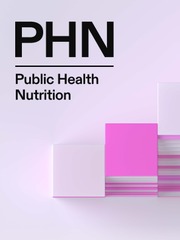No CrossRef data available.
Article contents
Instruments for assessing organisational food environments of workplaces: a scoping review
Published online by Cambridge University Press: 14 April 2025
Abstract
To map out evidence on instruments for evaluating organisational food environments of workplaces and the components and dimensions considered in the identified instruments.
Scoping review that includes studies published as of January 2005, the year of publication of the model developed by Glanz et al. (2005). The databases consulted were PubMed, Embase, Web of Science, PsycINFO, Scopus, and Google Scholar until November 2024, without language restrictions. Studies were included if they evaluated the food environment of workplaces such as companies/factories, universities/post-secondary institutions/technical colleges, and hospitals/health care units. The conceptual model of Castro and Canella (2022), considering its components and dimensions, was used to synthesize the data.
After full reading, 54 articles were selected. Most were conducted in the United States and Brazil, although there were studies from 16 countries. A total of 36 instruments were identified: 19 were used in universities, 8 in hospitals, and 11 in companies. No instrument included all components and dimensions of the conceptual model; however, 3 instruments included most of them. The most evaluated component was the internal level of eating spaces, and the most evaluated dimensions were availability and quality of foods/beverages in eating spaces. Of the 36 instruments, 29 reported some measure of validity or reproducibility. The limitation most reported by the studies was the non-generalization of results because samples are limited.
Evaluations of the organisational food environment of workplaces can be used for monitoring, planning interventions and formulating public policies for such places, thereby enhancing workers’ health.
- Type
- Scoping Review
- Information
- Creative Commons
- This is an Open Access article, distributed under the terms of the Creative Commons Attribution licence (http://creativecommons.org/licenses/by/4.0/), which permits unrestricted re-use, distribution and reproduction, provided the original article is properly cited.
- Copyright
- © The Author(s), 2025. Published by Cambridge University Press on behalf of The Nutrition Society


